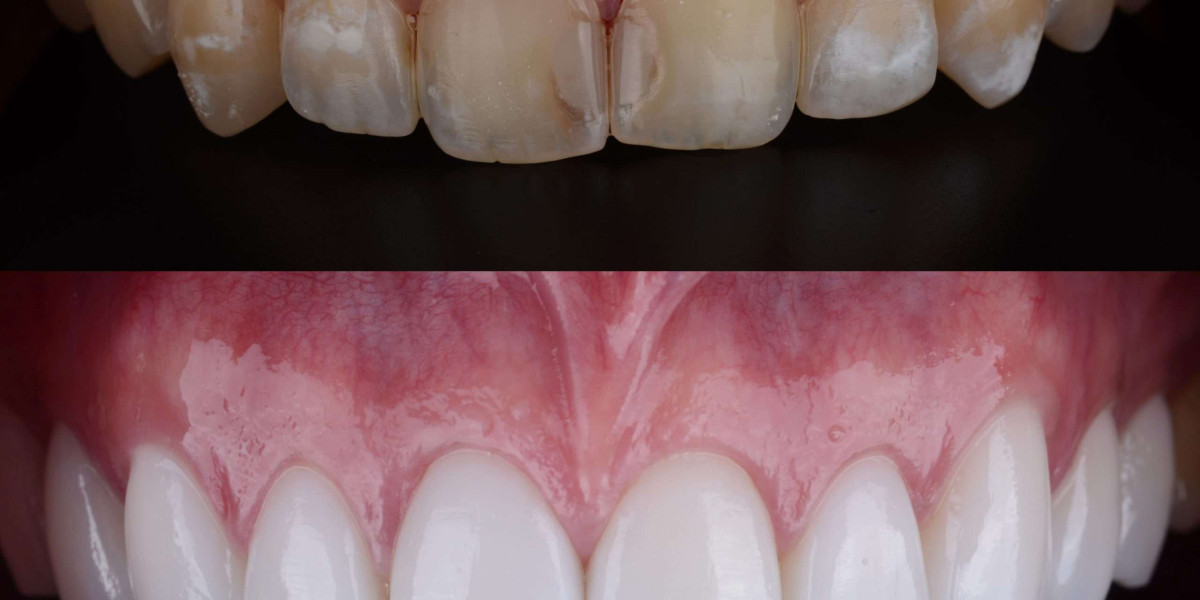Teeth whitening is a popular cosmetic dental treatment chosen by many people who want to achieve a brighter smile. Professional whitening procedures have grown in demand, but many patients still wonder how it interacts with existing dental restorations such as fillings, crowns, or veneers. This question arises particularly when combining a cosmetic goal with the need for long-lasting dental work. Understanding whether whitening can alter these restorations ensures patients make informed decisions when seeking treatments like teeth whitening Barnsley or even in cases where they might need an emergency dentist in Barnsley for urgent dental concerns.
This article will explore whether whitening can affect dental restorations, how the process works, and the best treatment options to give you both a safe and effective outcome.
How Teeth Whitening Works
Teeth whitening involves using bleaching agents such as hydrogen peroxide or carbamide peroxide, designed to penetrate the enamel and break down discoloured molecules. This process only impacts natural tooth enamel, which means fillings, crowns, and veneers typically remain unchanged. The effectiveness of whitening depends on multiple factors, including age, severity of discolouration, and whether the stains are extrinsic (surface) or intrinsic (deep within the tooth).
Because dental fillings and crowns are made from materials like composite resin, porcelain, and metal alloys, they will not respond to whitening chemicals in the same way teeth do. Instead, restorations will retain their original colour, which may not match freshly whitened natural teeth after treatment. This creates the biggest aesthetic challenge for patients undergoing whitening while having existing dental repairs.
Can Whitening Damage Fillings or Crowns?
The good news is that whitening does not structurally harm fillings, crowns, or veneers. The materials used in these treatments are resistant to bleaching agents. However, whitening can create contrast issues. If your crowns or fillings are older and have discoloured slightly due to wear, they may look darker beside newly whitened teeth.
This mismatch does not pose a health risk, but it may impact the cosmetic result you hope to achieve. For patients in Barnsley searching for teeth whitening Barnsley services, dentists usually recommend discussing your existing dental history in detail before proceeding with whitening treatments. This ensures the treatment plan fits your long-term smile goals.
Situations Where Professional Guidance Is Essential
If you have a significant number of fillings or crowns, it is best to consult a professional before attempting whitening. Whitening toothpaste and at-home trays often provide uneven results when restorations are present, leaving you dissatisfied or prompting unnecessary additional treatments.
In situations where urgent dental work was needed—such as help from an emergency dentist in Barnsley—you may already have a mix of restorations in place. A dentist can assess whether whitening now or later is more appropriate, and whether replacement of certain fillings or crowns might enhance the whitening result.

Common Challenges with Restorations After Whitening
The following are the most frequent issues patients experience with whitening when dental restorations are involved:
Restorations appearing darker compared to neighbouring whitened natural teeth.
A patchy or uneven smile shade due to the presence of resin fillings in the front teeth.
The need for additional dental visits to adjust or replace older crowns or fillings for uniformity.
By anticipating these challenges before beginning a whitening treatment, patients can plan more effectively. This not only leads to a more harmonious cosmetic outcome but also prevents disappointment after investing in dental care.
Treatment Options for a Balanced Smile
Dentists often approach cases involving both whitening and restorations with tailored strategies:
Whitening Before Restorations: If possible, dentists recommend whitening first and then matching newly placed crowns or fillings to the whitened shade.
Replacement of Old Restorations: For patients with discoloured resin fillings or older crowns, replacing them after whitening ensures colour consistency.
Blending Techniques: In cases with multiple restorations, strategic blending of materials can achieve a natural appearance.
The coordination of whitening with restorative dentistry requires careful planning and a strong aesthetic sense. Discussing goals during consultation will save unnecessary costs and ensure a smooth, attractive finish.
Comparing Whitening Impact: Natural Teeth vs. Restorations
To illustrate how whitening affects enamel differently compared to dental restorations, the table below summarises the contrasts:
When to Consider Whitening
Not everyone is immediately suitable for whitening, especially those who have significant dental work completed. If you have crowns or fillings, whitening may not give you the uniform smile you envisage without replacing certain restorations. Professional advice is key here.
For example, if you had an urgent procedure with an emergency dentist in Barnsley to fix a damaged tooth, whitening shortly after might create uneven tones since the crown or composite repair cannot be lightened. Waiting for complete healing and discussing shade matching with your dentist ensures better results.
Signs You May Need Restoration Replacement Post-Whitening
Dark or mismatched fillings are visible against brightened natural teeth
Crowns at the front of the smile look more yellow compared to neighbouring whitened teeth
Previous bonding or resin work showing inconsistencies after whitening
Ways to Maintain Whitening Results Effectively
Adopt a strong oral hygiene routine, including brushing with fluoride toothpaste twice daily
Minimise intake of coffee, tea, and red wine, which can quickly stain enamel
Schedule follow-up whitening touch-ups as recommended by your dentist
Questions to Ask Before Whitening Treatments
Will my existing crowns or fillings be visibly affected after the treatment?
Should old restorations be replaced for better cosmetic results?
What sequence of whitening and restorative work will give me the most natural smile?
Considering At-Home Whitening Products
Over-the-counter whitening strips and gels often fall short when patients have multiple fillings or crowns. Home products cannot alter restorations and may cause tooth sensitivity if overused. This is why professional supervision is strongly advised, especially for individuals seeking noticeable, even results in procedures like teeth whitening Barnsley.
The Role of Customised Whitening Plans
Dentists tailor whitening programmes to individual needs. Custom-fit trays allow safe, even application of whitening gel, preventing patchiness around restorations. In-office laser treatments provide quicker results, but the presence of restorations must always be evaluated first. By addressing these considerations, patients avoid unpleasant surprises and enjoy a smoother whitening journey.
Video Link : https://vimeo.com/1062370089?share=copy
Final Thoughts
Whitening treatments are safe and effective for natural teeth, but they cannot alter the shade of fillings, crowns, or veneers. This can sometimes lead to colour mismatch, requiring replacements or adjustments for consistency. For patients researching options such as teeth whitening in Barnsley or addressing urgent dental needs through an emergency dentist in Barnsley, it is crucial to consider existing restorations before undergoing treatment. At EDB, our experienced team is ready to guide you through every stage of this process to ensure safe and aesthetically pleasing results.







